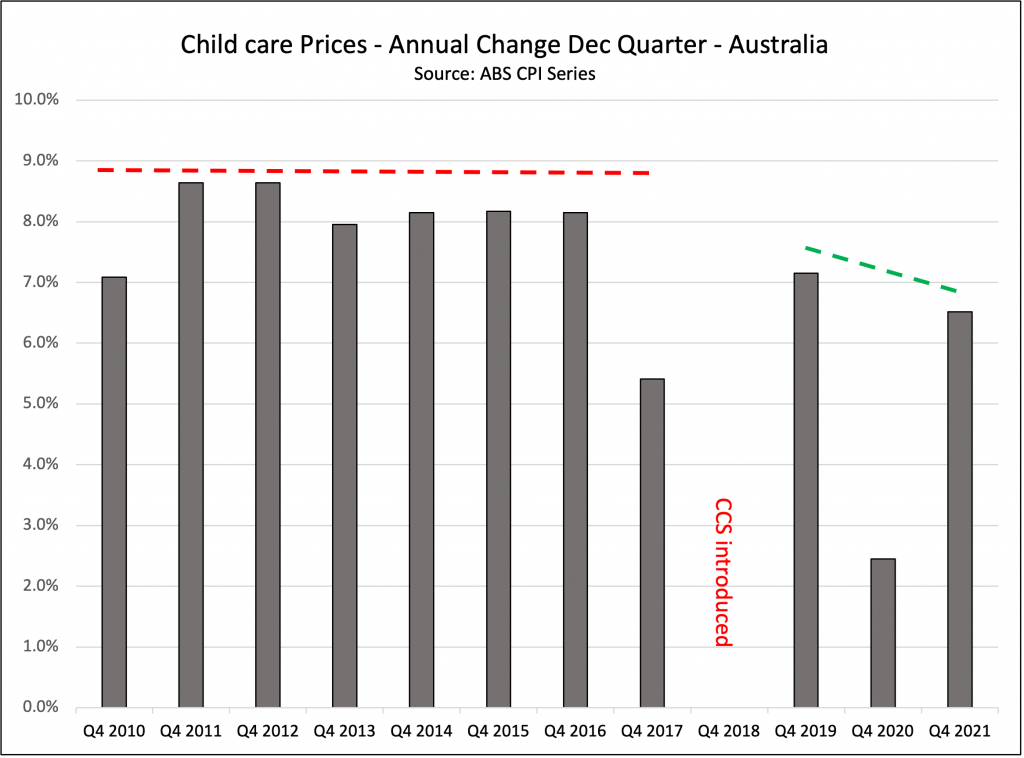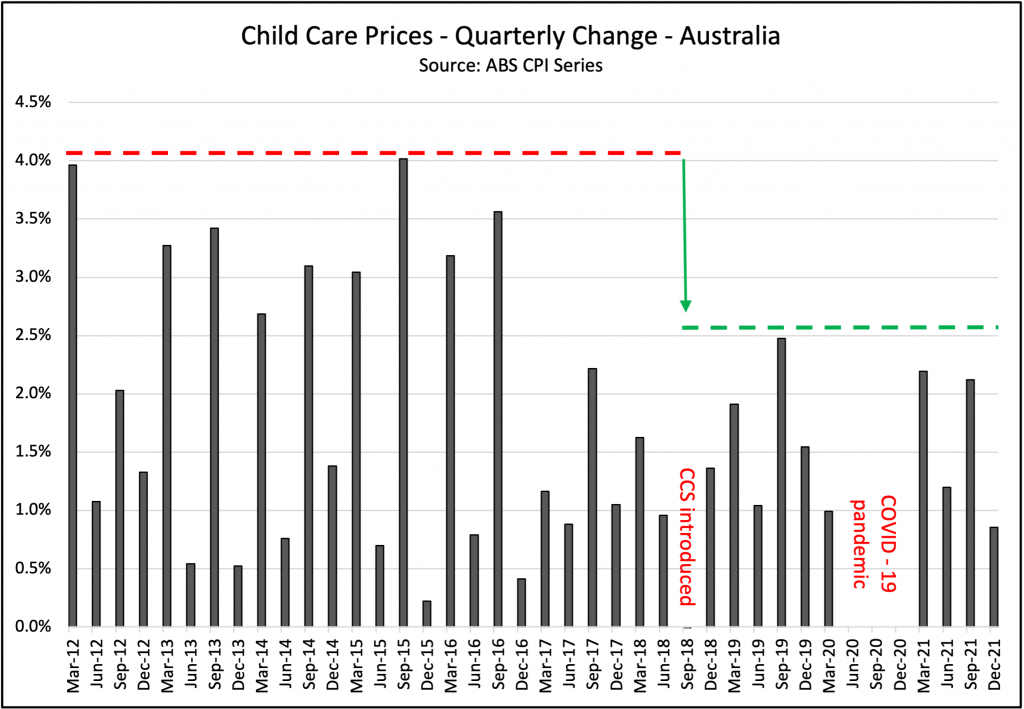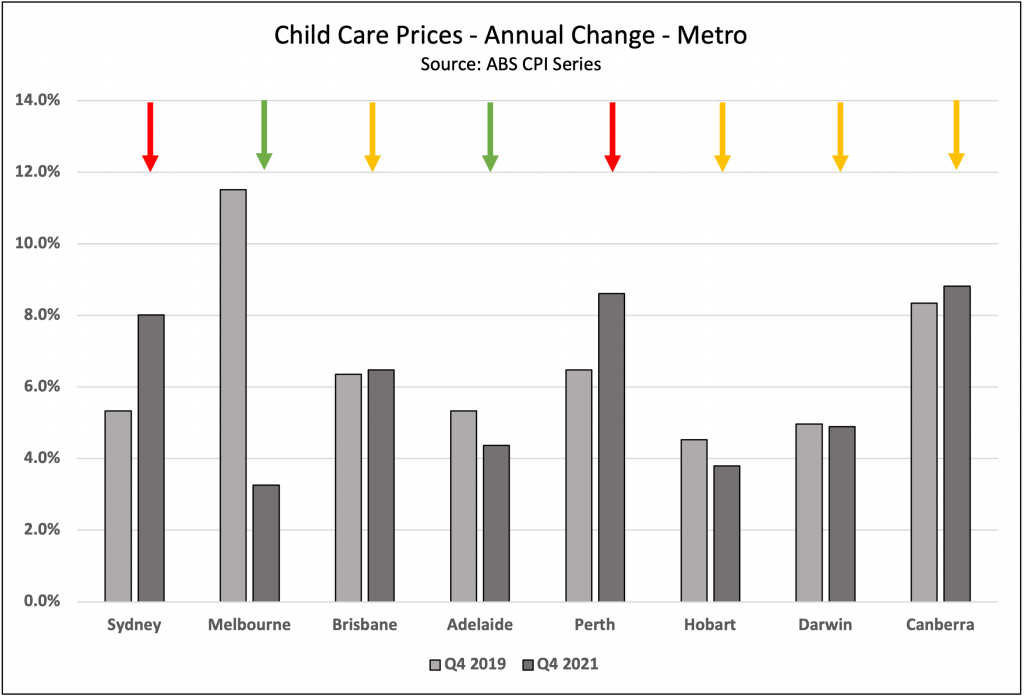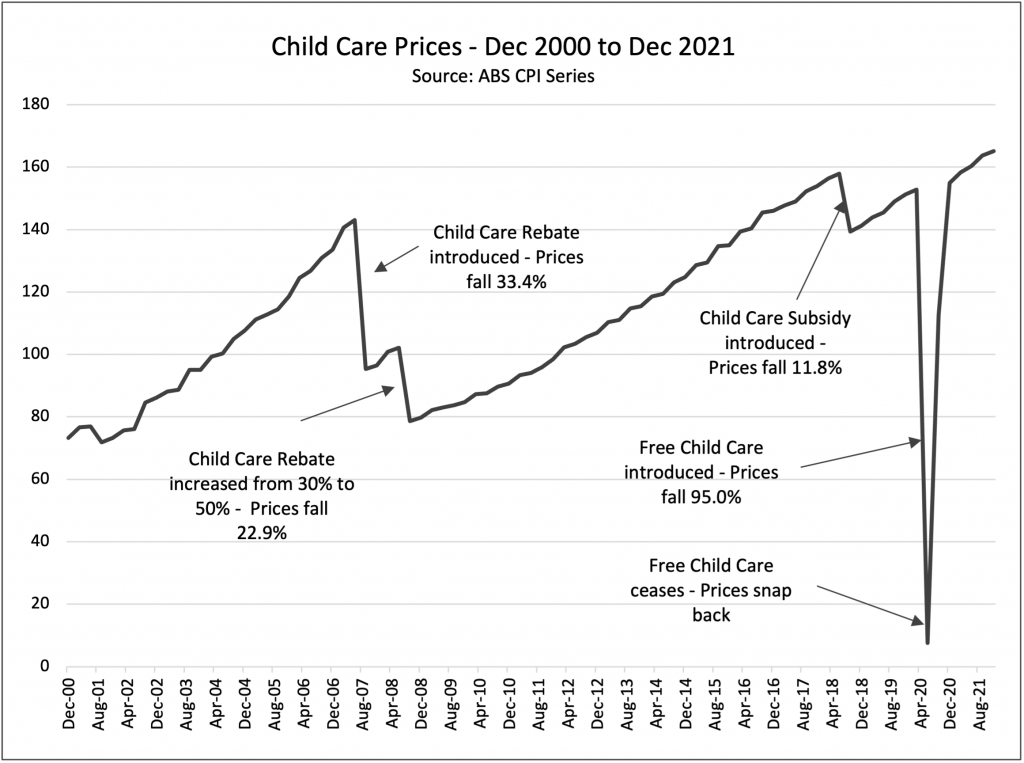Child care prices rise 6.5% year on year according to latest inflation data from ABS

Child care prices rose by 6.5 per cent in the three months ended December 2021 across the metropolitan cities of Australia compared to the same period last year as COVID-19 impacts receded and providers returned to more historically consistent fee increase patterns.
The data, released by the Australian Bureau of Statistics (ABS) as part of its Quarterly CPI series, is the first such release since the pandemic commenced that includes an annual comparator period, namely December 2020, that wasn’t overtly impacted by policy measures taken in earlier periods such as not charging for care or capping fee increases.
As a result, December 2021 provides a cleaner glimpse as to what degree providers have been willing to raise fees in a more normalised operating environment.
A rise of 6.5 per cent shows a solid bounce back from the previous quarter’s annual increase of just 2.4 per cent and although still a relatively high number remains below the very consistent increases of around 8.0 percent experienced in the December quarter from 2011 to 2016, essentially pre the implementation of the Child Care Subsidy.

This observation is also borne out in the higher frequency quarter on quarter change data which shows a reduction in instances of extreme price increases from between 2.5 per cent to 4.0 per cent per quarter to between 1.5 per cent to 2.5 per cent.

Although prices have increased by 6.5 per cent year on year across Australia, there is significant variance between the price increase trends across the capital cities of Australia in the current period and also relative to the pre-COVID December 2019 quarter.

As can be seen, Canberra, Perth and Sydney showed the largest annual gains compared to last year, with Melbourne recording the lowest. Notably, when comparing the annual increases to those passed in December 2019, the majority of increases are broadly similar with the exception of Melbourne which recorded a very significant fall from close to 12 per cent down to just over 3 per cent.
That being said, the overall trend of price increases in Australia continues to drive prices up into record territory with Q4 2021 representing the fourth quarter with prices exceeding the previous peak recorded in Q2 2018.

Indeed, prices overall are now 4.6 per cent above the previous highs, with only Melbourne maintaining any value relative to pre CCS prices with it still 4.7 per cent below Q2 2018 levels. All other jurisdictions are either around the Q2 2018 levels or above them with Brisbane exhibiting the largest increases now at 9.9 per cent higher than pre-CCS.
To review the ABS CPI data please click here.
Popular

Policy
Practice
Provider
Quality
Spot checks, CCTV and scrutiny of Working With Children Checks: sector responds to child safety crisis
2025-07-07 07:15:26
by Fiona Alston

Quality
Practice
Provider
Research
Workforce
Honouring the quiet magic of early childhood
2025-07-11 09:15:00
by Fiona Alston

Policy
Practice
Provider
Quality
Workforce
Minister Jess Walsh signals urgent action on safety and oversight in early learning
2025-07-11 08:45:01
by Fiona Alston









